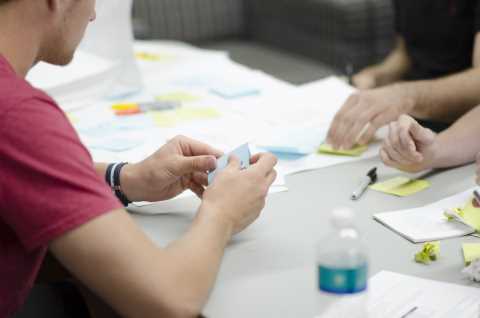Agile is about giving responsibility to the people, and self-organization is one of the way this is achieved. Agile is also about continuous improvement and adaptation. To follow this journey, the Scrum teams need to assess how they are doing and where they should improve. In this article, Ben Linders discusses Agile self-assessments and how they can support the continuous improvement process to an Agile mindset.
Author: Ben Linders, https://www.benlinders.com/
When organizations want to increase their agility, they often start an agile transformation by implementing frameworks like Scrum or Kanban. Although it sounds straightforward, many organizations have found out that becoming agile is a journey into the unknown, and traveling their agile journey isn’t easy. There is just so much that needs to be done and it is hard to decide what to do when and how to do it to get business value out of the transformation. Agile self-assessment helps teams to assess how agile they are and decide what to do next to increase their agility. It is a tool to keep your transformation on track and get more and quicker benefits.

Agile Self-assessments
Agile methods and frameworks like Scrum don’t tell you how to increase your agility. The values and principles from the Manifesto for Agile Software Development state that you have to find your own way, by reflecting how you are doing and finding out where you need to improve. But how can you do that?
Agile retrospectives are one way for the teams to inspect and adapt their way of working. Normally retrospectives look at the past sprint iteration/sprint to define actions for the next one. This makes them useful to address issues that teams are dealing with currently, but less suitable to guide the agile journey and keep your agile transformation on track. For that, you need a tool that tells you where you are and where to go next. This is where agile self-assessments fit in.
Agile teams can use self-assessments to find out how good they are performing. As the name suggests, it is the kind of assessment that they can do themselves which makes them different from external assessments or audits. Neither the assessment nor the results are imposed on the team, and the team is free to decide what to do and how to do it.
Traveling your Agile Journey
There isn’t a standard route to become agile, you have to find your own way. Becoming agile is a journey of continuous improvement. To travel it well, you need to think about where you want to go and how to travel it.
Team members can have different ideas about how the team is doing and what needs to be done to improve. Teams use agile self-assessments to bring this out, discuss and align on how to continue. This helps them to see how agile they are and what they can do to increase their agility to deliver more value to their customers and stakeholders.
Teams can do agile self-assessments during their retrospective or at any time when they want to find out how they are doing and look for ways to improve. Organizations use the overall results from team assessments to decide where to invest in their agile transformation and decide what the next steps will be.
Assessing your Agility
Agile coaches use self-assessments in agile transformations to guide teams and help them learn about agile to find their way. There are many different ways to do agile self-assessments – I have listed more than 60 Agile Self-assessment Tools and Techniques in my blog – and many consultancy organizations started offering services for teams to assess their agility.
In 2016 I created a game for teams to do Agile Self-assessments. I started using the game in my workshops to teach agile practices and when I coach teams to help them reflect and improve in their own pace. After I played the game at several conferences and meetups, I found out that people really like it. Playing the game felt natural to them and the in-depth discussions about agile that the cards triggered helped teams to take action.
As a was getting more and more requests from people who wanted to play the game with their teams, I decided to offer the possibility to download the game. The Agile Self-Assessment Game consists of 52 cards with statements on applying agile practices. It is supported with an expansion pack for Scrum with 13 cards with statements on specific Scrum roles and practices.
Playing the game
If you want to find out how agile you are and what you can do to increase your agility, the agile self-assessment game is there to help you. You can use the game for chartering teams or in your retrospectives to help teams to reflect on their own team interworking and agree upon the next steps for their agile journey.
Readers from Scrum Expert can download the game with a discount. Go to benlinders.com/downloads and use the coupon “Scrum Expert” to get 40% off for the Agile Self-assessment Game and all expansion packs (Scrum, DevOps, etc). This coupon is valid until August 31.
About the Author
Ben Linders is an Independent Consultant in Agile, Lean, Quality and Continuous Improvement, based in The Netherlands. He is the author of Getting Value out of Agile Retrospectives, Waardevolle Agile Retrospectives, What Drives Quality and Continuous Improvement. He is also the creator of the Agile Self-assessment Game.

